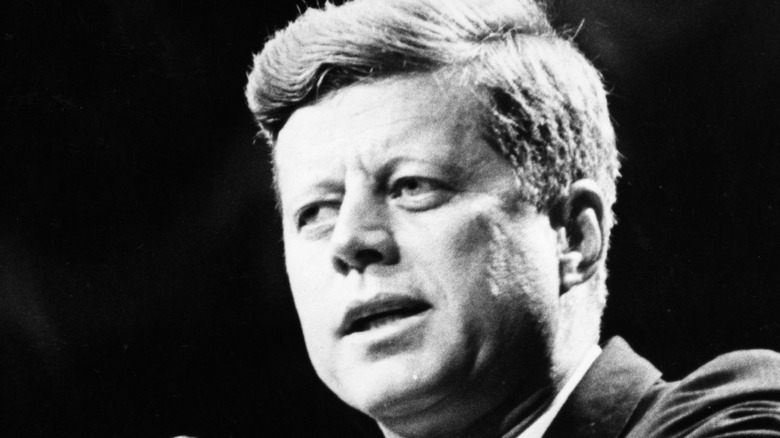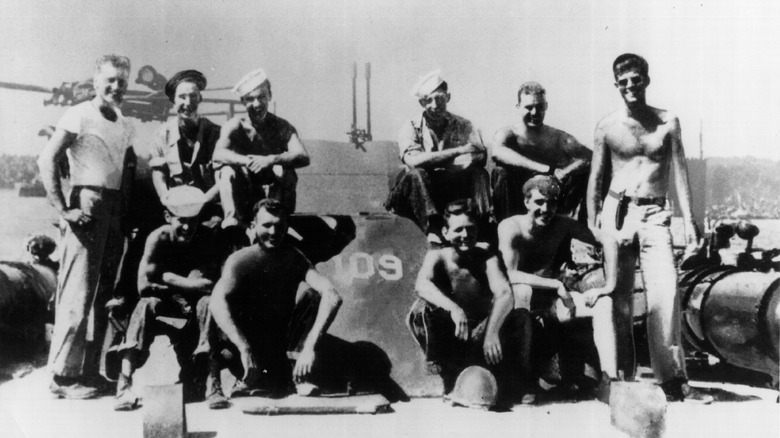Here's How JFK Faked His Way Into The Navy
Both during and after his life, John F. Kennedy has earned a place as one of America's most famous presidents. Many aspects of his career, including his negotiations to avoid nuclear war with the Soviet Union, efforts to push civil rights legislation forward, scandals concerning extramarital affairs, and his assassination have garnered significant public attention in the decades since his death. Yet what many are less aware of are details of Kennedy's life before he became president.
Early in his adult life Kennedy became one of eight future presidents to have served during World War II (via USO). He served in the Pacific Theater as commander of a PT boat — a class of small American torpedo boat — while his brother Joseph P. Kennedy was a bomber pilot who died in Europe during an experimental drone test. JFK of course survived the war, but his admission into the Navy in the first place was only possible because of his family's wealth (via Mental Floss).
Money and influence ensured that doctors looked the other way
Kennedy (above, far right) was plagued by health problems throughout his life, Addison's disease having been chief among them. A condition where the adrenal glands do not work properly, this incurable disease can be life-threatening with its symptoms of low blood pressure, weight loss, extreme fatigue, and adrenal failure (via Mayo Clinic). Kennedy also contracted scarlet fever and colitis in his youth, and in college suffered a severe back injury from football. Given the stringent standards for military acceptance in America during World War II, any one of these would have confined him to civilian life.
While Kennedy definitely had an eagerness to join, it was largely his father's prominent status in society and position as ambassador to Britain that he was accepted (via PBS). Though his conditions were a potentially dangerous liability to himself and those he commanded, JFK served with distinction during the war. When his PT boat was rammed and sunk by a Japanese destroyer, he kept his surviving 10 crew together and alive (via HistoryNet). Kennedy and his men swam miles between islands — Kennedy himself towed one of the sailors who was too injured to swim — before eventually being rescued.

